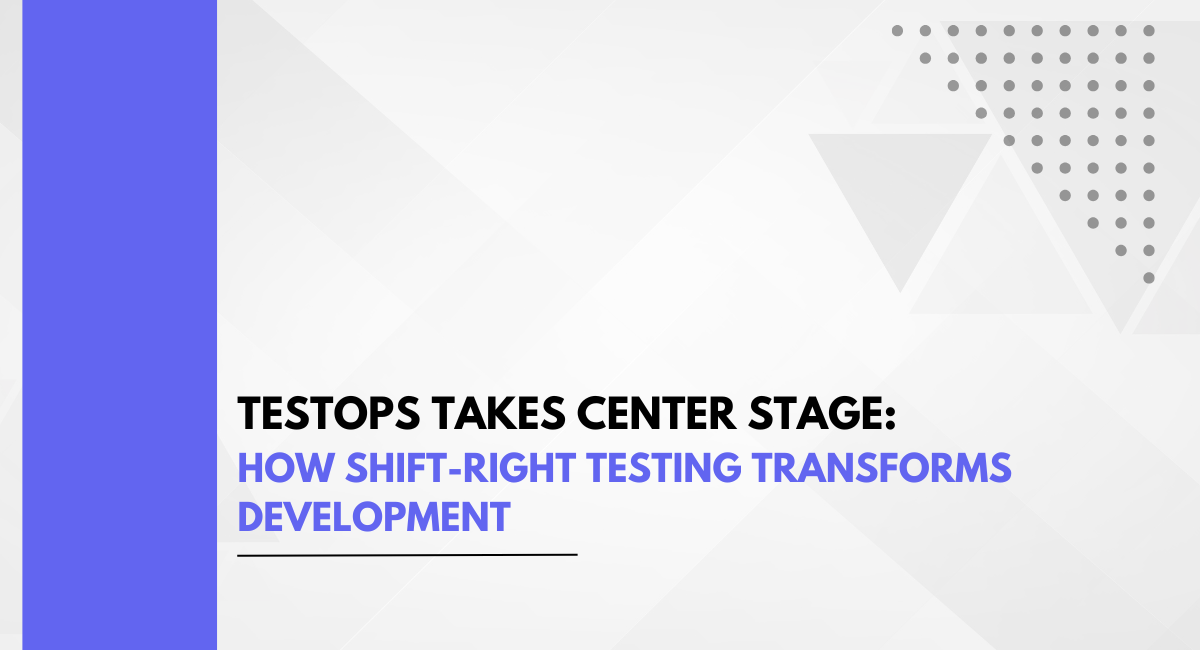TestOps, is an emerging practice that combines the best of DevOps with real-time deployment and testing. Shift-right testing, a core component of TestOps, moves some testing phases into production, ensuring that software performs flawlessly under real-world conditions.
The Rise of TestOps
TestOps represents a cultural shift within organizations to treat testing as an integral part of the development process. By integrating testing into every stage of the software development lifecycle, companies can identify and address issues much earlier, thus reducing downstream problems.
One of the key drivers behind the emergence of TestOps is the increasing complexity of modern software systems, which often involve multiple components and complex user interfaces.
The Shift-Right Approach
Shift-right testing involves moving testing activities further to the right on the development timeline. Instead of waiting for a complete build before starting comprehensive testing, TestOps advocates for incorporating various forms of testing at different stages. This includes unit testing, integration testing, and end-to-end user acceptance testing (UAT).
For instance, automated unit tests can be executed immediately after code is written, providing immediate feedback on whether the new code is correct or not. Continuous integration and continuous deployment (CI/CD) pipelines further streamline this process by automating the build, test, and deployment of code.
The Role of Automation
Automation plays a crucial role in TestOps. By leveraging tools and frameworks like Selenium, Appium, or even machine learning algorithms, organizations can automate significant portions of their testing efforts. This not only saves time but also improves consistency by reducing human error. Additionally, automation allows for executing complex scenarios that might be difficult or time-consuming for human testers to perform manually.
For example, automating regression testing ensures that changes made to the code do not introduce new bugs or break existing functionality.
Case Studies in TestOps
Several companies have successfully implemented TestOps strategies within their development workflows:
- Amazon Web Services (AWS): AWS has been at the forefront of adopting DevOps practices, which inherently include robust testing mechanisms. Their CI/CD pipelines ensure that every change undergoes rigorous testing before deployment.
- Google: Google's approach to testing is well-documented through its internal initiatives like Code Review and Continuous Integration. These practices have significantly improved the reliability and speed of their software releases.
- Microsoft: Microsoft has heavily invested in automated testing tools like Visual Studio, which provides comprehensive testing frameworks for various types of software applications.
Challenges in Implementing TestOps
While the benefits of TestOps are substantial, there are several challenges that organizations must address when implementing this approach:
- Resource Intensiveness: Implementing an effective TestOps strategy requires significant investment in both human resources and technology infrastructure. Training developers on new testing methodologies and tools can be time-consuming.
- Integration Complexity: Integrating different testing tools into existing CI/CD pipelines can be complex due to varying standards and protocols used by different tools.
- Cost Considerations: While long-term benefits include reduced rework and improved quality assurance, initial costs associated with tooling up and training might be substantial.
The advent of TestOps signifies a significant shift towards integrating testing as an integral part of software development rather than treating it as an afterthought. By adopting shift-right testing strategies coupled with extensive automation capabilities, organizations can ensure higher levels of software quality while reducing the risk associated with downstream problems.
As technology continues to evolve at an unprecedented pace, companies must adapt their strategies accordingly. Implementing TestOps represents not only a best practice but also a necessity for any organization serious about delivering high-quality software products efficiently.
By understanding how companies like AWS, Google, and Microsoft have successfully integrated TestOps into their workflows while navigating through challenges such as resource intensiveness and integration complexity can provide valuable insights for other organizations looking to embark on this transformative journey.
You may also be interested in: Integrations: One Platform, Many Tools | ContextQA
Book a Demo and experience ContextQA testing tool in action with a complimentary, no-obligation session tailored to your business needs.
We make it easy to get started with ContextQA tool: Start Free Trial.
